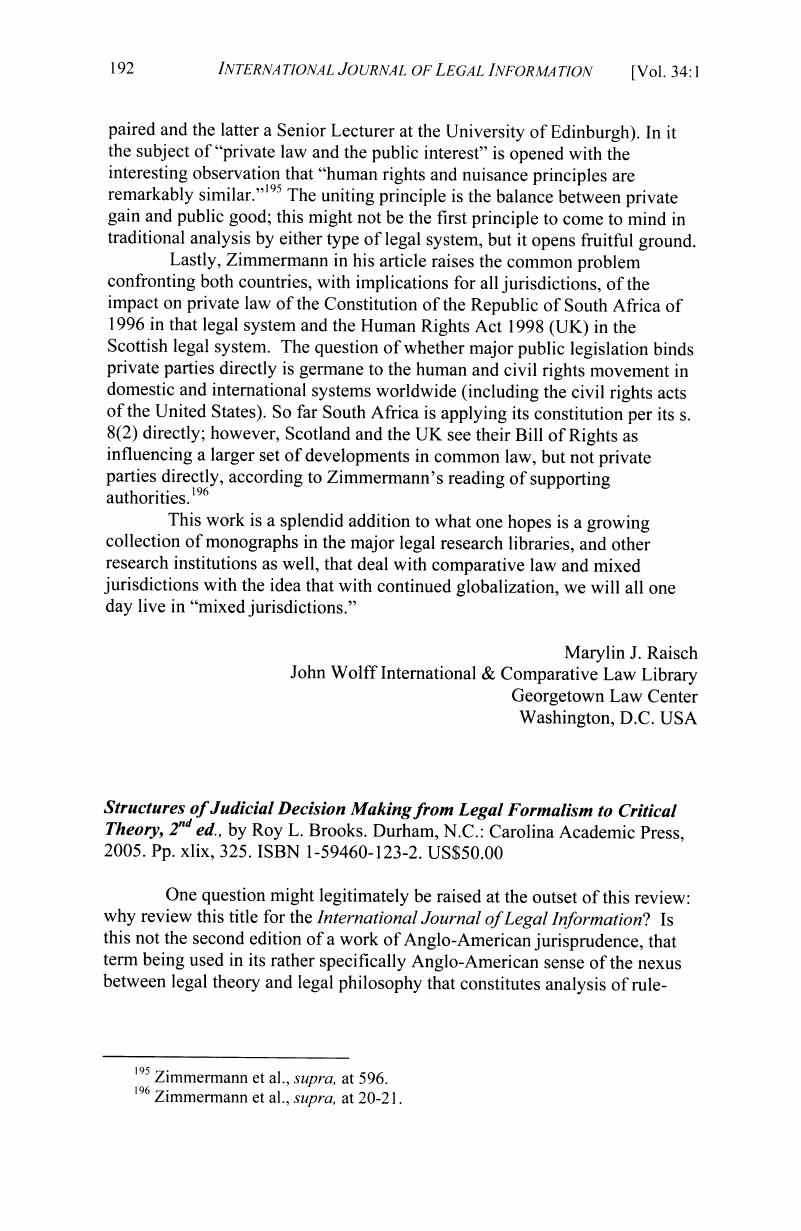No CrossRef data available.
Published online by Cambridge University Press: 28 February 2019

195 Zimmermann et al., supra, at 596.Google Scholar
196 Zimmermann et al., supra, at 20–21.Google Scholar
197 Reference here is to the broader definition, related to legal philosophy, “the study of the first principles of the law of nature, the civil law, and the law of nations…. 2. More modernly, the study of the general or fundamental elements of a particular legal system, as opposed to its practical and concrete detail.” Black's Law Dictionary 871–872 (8th ed. 2004).Google Scholar
198 For the tensions inherent in opportunity analysis, see generally Robert Hockett, Whose Ownership? Which Society?, 27 Cardozo L. Rev. 1 (2005)Google Scholar
199 See Janny Scott and David Leonhardt, Class in America: Shadowy Lines That Still Divide, N.Y. Times, May 15, 2005, at A1 Sunday Final Edition, CLASS MATTERS: First article in a series).Google Scholar
200 Story, Joseph, Commentaries on equity jurisprudence: as administered in England and America. 2nd ed., rev., corr., and enl. Boston: C.C. Little and J. Brown, 1839.Google Scholar
201 Reference here is more particularly to Justice Scalia's dissent in Roper v. Simmons, 125 S.Ct. 1183 (2005) (juvenile death penalty case); for analysis of this and other similar positions taken by Justice Scalia in other cases and discussions see generally Jeremy Waldron, Foreign Law and the Modern Ius Gentium, 119 Harv. L. Rev. 129 (2005).Google Scholar